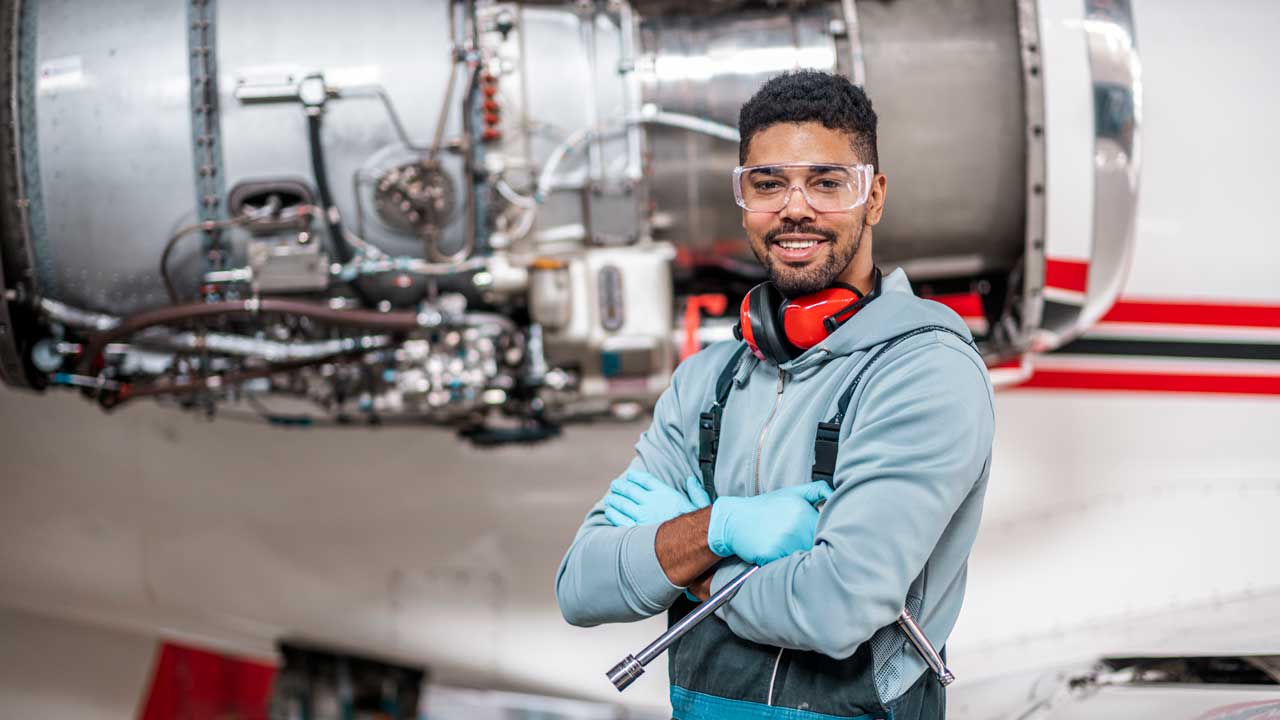Best Practices for Using Work Positioning Devices in an Industrial Workplace
Work positioning devices play a critical role in enhancing productivity and safety in industrial settings. These devices streamline operations and significantly reduce the physical strain on workers. Now, we will explore the best practices for deploying these devices effectively within your operations. We aim to provide actionable insights to maximize efficiency and worker safety by leveraging ergonomics in the modern day industrial workplace.
What do you need to know about work positioning devices, how can they help you in an industrial workplace, and what are a few of the best practices you need to know? Learn more below, and contact us for help maximizing the value of your work positioning devices.
When Did Work Positioning Devices Become So Popular?
Work positioning devices have gained popularity due to their ability to significantly enhance operational efficiency and worker safety. By correctly positioning workpieces, these devices reduce unnecessary movement, saving time and reducing wear-and-tear on workers’ bodies. In industries where precision and repeatability are key, such devices ensure that tasks are performed consistently and to the required standards. The adaptability of these devices to various industrial tasks makes them invaluable across diverse sectors.
Their popularity also stems from the ability to integrate seamlessly with existing workflows. By automating aspects of the positioning process, they help streamline production lines and reduce the manual labor required. This not only boosts productivity but also enhances the quality of the output by minimizing human error. Furthermore, the ergonomic benefits provided by these devices help companies adhere to health and safety regulations, promoting a safer workplace.
What Are the Types of Work Positioning Devices?
Work positioning devices vary widely but can be broadly categorized based on their application and function. Common types include lift tables, manipulators, balancers, and turntables, each designed to facilitate different movements and handle various loads. Depending on the specific
requirements of the workplace, these devices can be manually operated, semi-automatic, or fully automated.
Features of Work Positioning Devices To Consider
With so many work positioning devices available, what are a few features you should consider to help you find the right option to meet your needs?
- Load Capacity: When choosing a work positioning device, it’s crucial to consider the load capacity to ensure it can handle the specific weights your operations require. Overloading a device can lead to mechanical failures and safety hazards, so selecting a device that comfortably supports your maximum load is essential. Ergotronix offers devices with various load capacities, ensuring that whether you’re handling light components or heavy machinery, there’s a product to meet your needs.
- Adjustability: Adjustability is a significant feature, allowing the device to accommodate different tasks and operator requirements. Look for devices that offer a range of height, reach, and angle adjustments to maximize ergonomic benefits and adapt to different work processes. Ergotronix devices are designed with multi-axis flexibility, which is perfect for complex or varied operational setups.
- Ease of Use: The user interface and ease of operation are vital for maintaining workflow efficiency and ensuring safety. Devices that are simple to operate reduce training time and minimize operator errors. Ergotronix focuses on intuitive controls and interfaces, making their work positioning devices suitable for a wide range of industrial environments.
- Durability: Industrial environments can be harsh, and the durability of a work positioning device is crucial for long-term operation. Look for devices built with robust materials that can withstand the rigors of daily use without frequent breakdowns. Ergotronix’s devices are constructed to offer long service lives, even under tough conditions, making them a reliable choice for any industrial setting.
Work Positioning Devices: Best Practices To Note
Effective use of work positioning devices is not just about installation but also about how they are managed and maintained in the workplace. To maximize the value of these devices, there are several best practices you need to follow. They include:
- Conduct Regular Training: It is essential that all operators are properly trained on how to use work positioning devices safely and efficiently. Regular training sessions help ensure that all employees are aware of the operational procedures and safety measures. These sessions should be updated regularly to reflect any new regulations or changes in equipment.
- Perform Routine Maintenance: Regular maintenance is crucial to ensure that work positioning devices operate reliably and safely. Maintenance routines should include regular inspections, lubrication, and immediate repairs of any wear and tear. This not only extends the life of the equipment but also prevents potential accidents caused by equipment failure.
- Use Appropriate Devices for Specific Tasks: Selecting the right device for the task at hand is vital. It is important to assess the needs of the operation and match the device accordingly, considering factors such as load capacity, range of motion, and the type of workpiece being manipulated. Using inappropriate equipment can lead to safety risks and reduced efficiency.
- Implement Ergonomic Practices: Integrating ergonomic principles into the setup and operation of work positioning devices can significantly reduce the risk of injuries. Devices should be adjusted according to the specific needs of the operator, including the correct height and reach, to avoid awkward postures or excessive strain. Implementing ergonomic practices can help you reduce the rate of injuries in the workplace.
- Establish Clear Safety Guidelines: Clear safety guidelines should be established and communicated to all staff. These guidelines should cover the proper operation of equipment, emergency procedures, and the use of personal protective equipment (PPE). Regular safety drills and postings of guidelines around workstations can reinforce safe practices.
- Monitor and Document Performance: Monitoring the performance of work positioning devices helps identify areas for improvement and ensure optimal use. Documenting this performance also aids in troubleshooting problems and planning for future upgrades or replacements. Effective monitoring contributes to better maintenance scheduling and more accurate budgeting for equipment needs.
- Stay Updated with Technology and Training: The field of industrial automation and ergonomics is constantly evolving. Staying updated with the latest technology and training methods can provide significant competitive advantages. Regularly attending industry seminars, subscribing to relevant publications, and engaging with experts can help keep your practices current.
Monitoring and Evaluating Device Performance
Consistent monitoring and evaluation of how work positioning devices perform can provide insights into their effectiveness and efficiency. Regularly assessing these metrics helps ensure that the devices continue to meet the operational demands and safety standards required. It also helps in identifying any potential areas for improvement in both the devices and their usage.
Documenting all evaluations and any incidents related to the devices can aid in refining operational procedures and safety measures. This data is invaluable for continuous improvement and ensuring compliance with industry standards. Moreover, it supports decision-making processes related to equipment upgrades or replacements.
Common Mistakes to Avoid with Positioning Devices
Work positioning devices can make a major difference in the workplace, but there are several common mistakes you need to avoid. They include:
- Neglecting Regular Maintenance: Skipping routine checks can lead to equipment failure and safety hazards.
- Improper Training: Failing to properly train employees on device usage leads to inefficiencies and increases the risk of accidents.
- Overloading Devices: Exceeding the recommended capacity of positioning devices can cause mechanical failures and serious workplace accidents.
- Ignoring Ergonomic Setup: Not configuring devices to meet ergonomic standards can result in worker discomfort and potential injury.
- Lack of Safety Protocols: Underestimating the importance of safety guidelines can lead to misuse of equipment and severe injuries.
Reach out to experts who can help you find the right work positioning devices to meet your needs.
How Work Positioning Devices Maximize Efficiency and Safety
Utilizing work positioning devices correctly not only boosts efficiency but also significantly enhances safety in the workplace. These devices allow for precise control and positioning of workpieces, reducing the need for manual handling and the associated risks. By improving the ergonomic setup, they also minimize the physical strain on workers, reducing the incidence of work-related injuries.
Adopting these devices in conjunction with best practices ensures a smoother workflow and a safer working environment. They are an investment in both the productivity and the well-being of employees, aligning operational goals with health and safety standards. When implemented effectively, the benefits of work positioning devices extend beyond the immediate gains in efficiency and safety, contributing to long-term business success.
Contact Ergotronix for Your Work Positioning Device
Ergotronix is committed to helping businesses like yours maximize the benefits of work positioning devices. Our team of experts is ready to assist you in selecting the right devices for your needs and ensuring they are integrated effectively into your operations. We can help you increase efficiency and reduce the rate of injuries in your workplace. Contact us today to learn how our solutions can improve efficiency and safety in your workplace.



